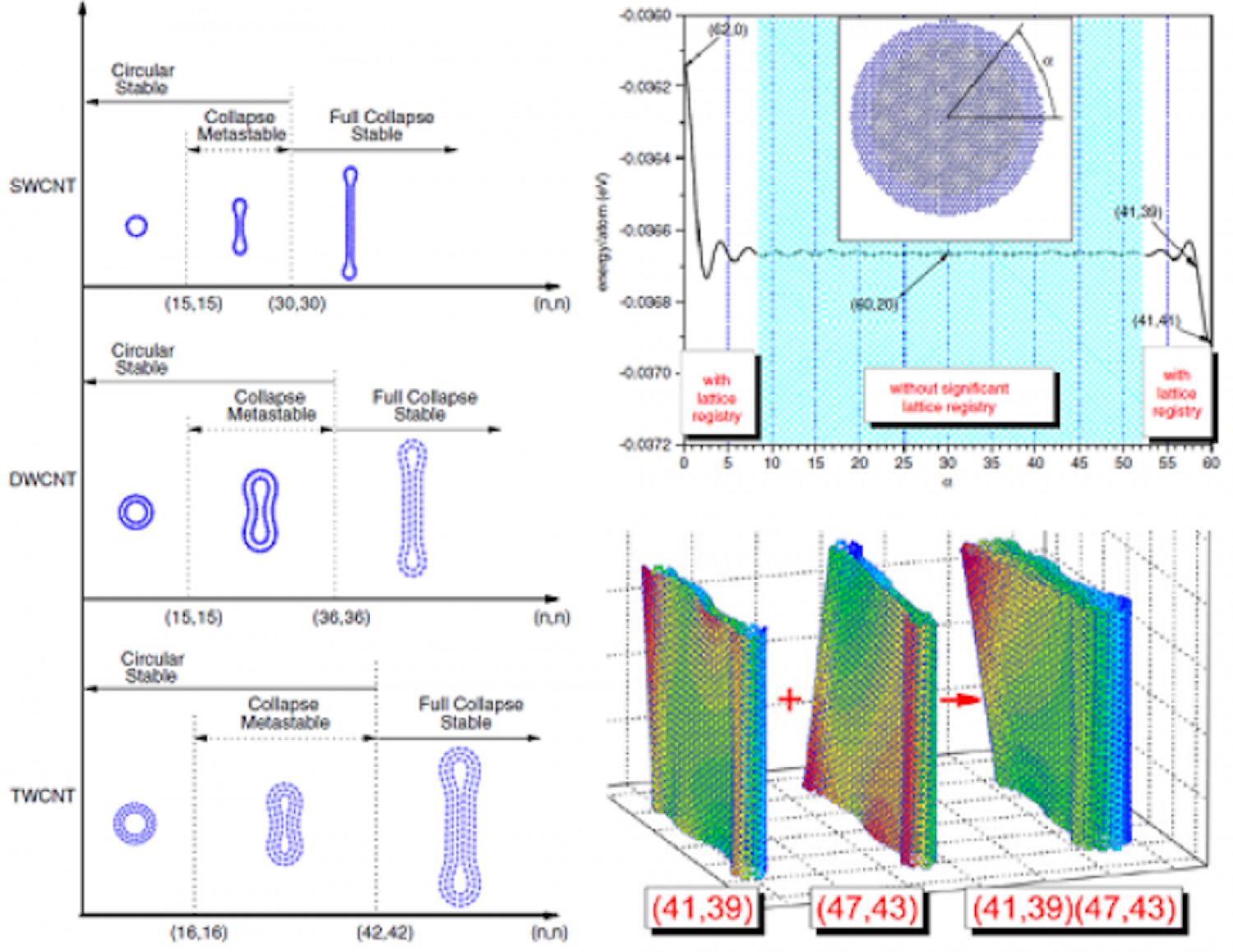Carbon nanotubes (CNTs) usually possess circular cross sections. As the size increases, van der Waals interaction could cause CNTs to collapse to a dumbbell shape. The collapse and stability of carbon nanotubes (CNTs) have important implications for their synthesis and applications. While nanotube collapse has been observed experimentally, the conditions for the collapse, especially its dependence on tube structures, are not clear. We have studied the energetics of the collapse of single- and multi-wall CNTs via atomistic simulations. The collapse is governed by the number of walls and the radius of the inner-most wall. The collapsed structure is energetically favored about a certain diameter, which is 4.12, 4.96 and 5.76 nm for single-, double- and triple-wall CNTs, respectively. The CNT chirality also has a strong influence on the collapsed structure, leading to flat, warped and twisted CNTs, depending on the chiral angle.
References:
J. Xiao, B. Liu, Y. Huang, J. Zuo, K.-C. Hwang, and M.-F. Yu, Collapse and Stability of Single- and Multi-wall Carbon Nanotubes. Nanotechnology 18, 395703 (2007).

